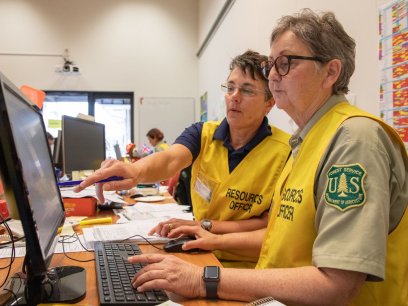Story
5 Ways to Give Back to the Environment

In the spirit of giving, think of how you can give back to the environment. What can you do to help protect and preserve the land, air, and water in your community and beyond? Every eco-friendly action you take—large or small—makes an impact. Use these ideas as a springboard for aiding the environment in your everyday life.
- Donate “stuff.” If you’ve got items you no longer use (like gently used clothing, small appliances, and household items), consider giving them away instead of throwing them in the trash. Contact your local charities to see if they accept gently used items. Some will even pick up large items, like furniture, directly from your home.
- Donate money. Plenty of organizations and charities exist to help clean up, protect, and preserve the environment. Support your favorite cause—in your community and around the world—that helps improve the environment and protect wildlife. If you’re interested in supporting environmental education, consider donating to NEEF.
- Ditch single-use plastics. According to Columbia University’s Earth Institute, an estimated eight million metric tons of plastic waste find their way into the oceans each year. Do your part to reduce plastic pollution by reducing your reliance on plastics and opting for reusable items such as utensils, straws, water bottles, and bags.
- Clean the air. Improve your indoor air quality by adding some greenery around your home. Certain houseplants can incorporate airborne toxicants into plant tissues, thus isolating them rather than releasing them back into the air. Top houseplants to improve indoor air quality include areca palm, lady palm, bamboo palm, rubber plant, dracaena, English ivy, Dwarf date palm, ficus, Boston fern, and peace lily. Outside, plant a native tree to reduce greenhouse gas emissions, eradicate air pollutants, and provide shade, which helps lower surface and air temperatures. Landscaping choices, when done right, can help restore water quality and protect aquatic ecosystems.
- Drive less. Instead of relying on your car to get you where you want to go, try walking or biking whenever possible. Since vehicle traffic greatly contributes to smog, fewer miles driven means fewer emissions. Even if you don’t own a bicycle, many cities make biking easy to do with affordable, convenient bike-sharing programs. If your community is lucky enough to have good mass transit available, take the bus, train, or subway more often, too.
Need more inspiration? Read Hands-on Activities You Can Do (At Home and At Work) to Help the Environment.
Topics


